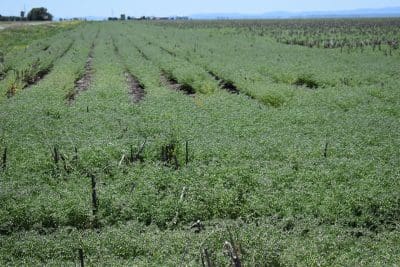A MULTI-MILLION dollar project spanning government, the private sector and universities has been launched as part of an Australian Research Council (ARC) program with the ambitious aims of bolstering legumes as global food demand increases in an environment of climate change and scarce natural resources.
The five-year ARC Industrial Transformation Research Hub – Legumes for Sustainable Agriculture, in partnership with the Grains Research & Development Corporation (GRDC), worth $14.5m in cash and kind, will position Australia to take advantage of a significant and growing market for these future crops.
University of Sydney deputy vice-chancellor (research), Professor Duncan Ivison, said the hub, based at the Camden campus, would help provide a coordinated approach to position legumes as the coming generation’s staples of choice.
“We hope that by drawing together the best researchers with leading industry experts, we will play a vital role in addressing complex food security, health and environmental issues, both here and abroad,” Professor Ivison said.
The hub will focus on innovative approaches to enhance drought-heat, salinity and flooding tolerance and to improve below-ground traits that are naturally linked to nitrogen acquisition for better plant growth.
It will include 13 chief investigators from state government agriculture research departments and universities including the University of Sydney’s Centre for Carbon, Water and Food, the Plant Breeding Institute, as well as the University of Western Australia, University of Adelaide, Australian National University and Flinders University – and create 12 postdoctoral roles.
Director of the hub, associate professor Brent Kaiser, said the importance of legumes in sustainable cropping systems had been extensively documented; legumes also promised significant untapped potential for genetic improvements.
“Although the past 50 years has seen an increase in the area planted with grain legumes, the area planted with cereals still outnumbers this fourfold – this lag may be due in part to unstable legume prices because of high variability in their yields,” associate professor Kaiser said.
“This lag, particularly in developing countries and despite increasing global demand, if left unchecked, could threaten current and future food security.
“As the world shifts from animal- to plant-based protein sources because of supply and cost issues, legumes are ideally placed to provide people with their nutritional needs.
“Legumes require low inputs and put nitrogen back into the soil, rather than using extensive amounts of expensive synthetic fertilisers that pollute the environment.”
Source: University of Sydney




HAVE YOUR SAY